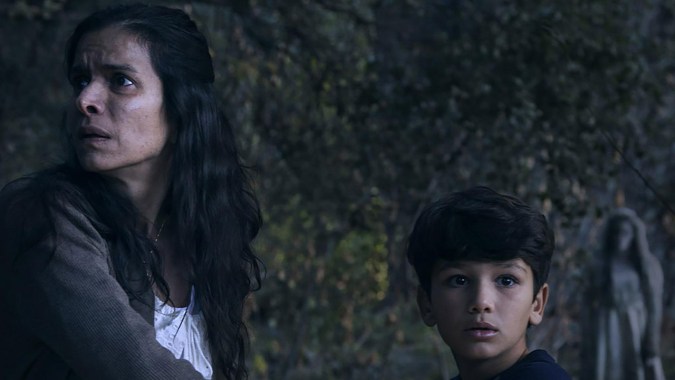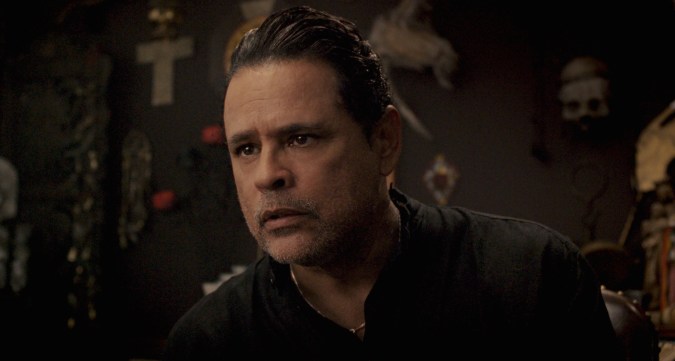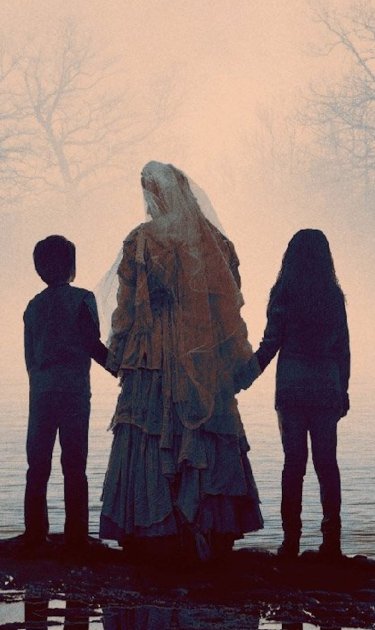Wailing “¡Ay, mis hijos!” with inconsolable sorrow, the centuries-old figure of La Llorona laments the death of her children, which she herself drowned in a river during a murderous stupor according to the Mexican version of the folktale popular across the Americas.
Its different variations – some with shape-shifting powers – have in common patriarchal roots and the image of a beautiful woman that entices individuals with malevolent intentions: La Sayona and La Llorona in Venezuela, La Sucia (Honduras), La Tunda (Ecuador), La Siguanaba (El Salvador and Guatemala), La Cegua (Costa Rica), La Calchona (Chile), La Patasola (Colombia), or La Tulivieja (Panama).
This perennial legend employed to get misbehaving kids in line with the threat of being taken to replace her kids, is the basis of Portuguese-American director Michael Chaves’ first feature The Curse of La Llorona, a proficiently executed horror flick with some interesting cinematography but little grasp on the folklore beyond its potential to become part of The Conjuring saga.
Jumping from an establishing sequence set in 1673, a very specific date for a story with so many interpretations, writers Mikki Daughtry and Tobias Iaconis set the narrative in 1973 where Anna Tate-Garcia (Linda Cardellini), a white mother of two whose late Latino husband worked in law enforcement, becomes aware of La Llorona through her work as a Child Protective Services caseworker.

Giving her this career is the writers’ best decision as it relates to the child abuse central to the myth and creates parallels between supernatural markings and corporal punishment. However, there is little else to admire in terms of the movie’s clumsy mechanics, repetitive intervals between extended silences and predictable jump-scares, and simplistically developed characters.
The CG apparition is utterly generic, almost as if there was a template that all VFX artists tasked with the creation of a female demonic entity were using. If the title character from last year’s The Nun, also part of The Conjuring universe, the mother from Mama, and this iteration of La Llorona were all hanging out at a bar in a ghostly girls night out, it would be rather complicated to tell them apart if it weren’t for their signature outfits.
Anna’s initial skepticism about a Latina mother’s encounter with La Llorona soon transforms into terror when the otherworldly mad woman sets her sights on her children and invades her home. With no time to get an exorcist from the Catholic Church, Anna requests the services of Rafael (Raymond Cruz), a former priest-turned-curandero. Cruz provides some comic relief delivering zingers as the grumpy shaman willing to help the family in need of paranormal guidance.
He’s also perpetually, and hilariously, annoyed at having to deal with godforsaken energies and will use clients as bait if needed to get the job done, because he’s got better things to do – whatever they are. Ghost busting is so passé for him, which makes his appearance the most ridiculous and most enjoyable aspect of this unoriginal tale, almost turning it into full-on self-parody.

The ritual Rafael applies to get rid of La Llorona at least does include one of the most recognizable elements of a traditional limpia or spiritual cleaning: eggs being rubbed on the body (or in this case a house) to capture negative vibrations that visually manifest themselves by turning the inside into a dark substance.
There’s plenty of holy water thrown around and other tactics used to deter the ethereal villain that take creative liberties that may or may not be grounded on anything actually associated with this folktale born out of mestizaje in colonial times, such as the idea of the árbol de fuego seeds that can create an invisible barrier preventing her from entering the home or the fact that something as simple as closing a door to a room also seems to stop her.
In truth, the intellectual enrichment of its viewers is low on the production’s list of priorities, as they struggle to forcefully fit this new period piece within New Line Cinema’s Conjuring Extended Universe. The connection they introduce to claim La Llorona as part of the same timeline is, not surprisingly, absurdly contrived.
You’ll have better luck running into the actual Llorona in a desolate alley than finding cultural significance in the darkness of a movie theater invoking this cash grab of a spirit.
The Curse of La Lllorona hits theaters on April 19.




